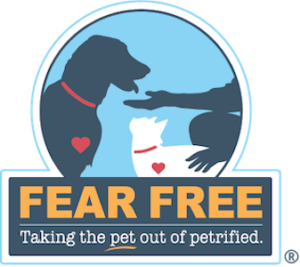The relationship between clients and their dogs has deepened as more people integrate their pets into daily routines, sharing everything from the food on their plates to the places they sleep. While this close harmony strengthens the mutual benefits of the human-animal bond, it also increases the chance of sharing unwanted parasites.
Ensure nothing—including fleas, ticks, and their associated diseases—can come between your clients and their canine companions with effective parasite education and prevention.
Making room for Fido: Is letting your dog sleep with you OK?
Before we explore the unseemly world of parasites, let’s pull back the covers on canine sleeping arrangements.
According to veterinary behaviorist Dr. Meghan Herron, DVM, DACVB, FFCP-V, sharing the bed with a dog is acceptable and, in some cases, advantageous for the dog or pet parent. “More and more people want that comfort and affection,” Herron said. “Having a canine companion [share your bed] can be helpful.” However, the dog’s and their owner’s comfort should be a priority. “Not every dog is going to enjoy sharing the bed,” said Herron, citing the need for undisturbed sleep or cooler temperatures as common reasons why. “Some dogs do great in a crate or sprawled out on a hardwood floor.”
While some owners worry that treating their dogs like humans (i.e., anthropomorphism) may lead to a sense of dominance or behavior problems, Herron says this is not the case, adding “there is no known correlation between these interactions and behavior issues.”
When sharing isn’t caring: Health risks
Physical closeness is an everyday way for people and dogs to grow their relationships, but without proper precautions, it can also increase their risk for certain health hazards. Fleas and ticks can easily move from dogs to humans, often unbeknownst to us as we sleep or rest. While ticks are less nimble than fleas—who can jump two feet high and 40 to 100 times their body length—unattached ticks can easily migrate from dog to owner.
In addition to causing painful bites, fleas and ticks can infest the client’s home, trigger flea allergy dermatitis, and transmit harmful diseases, including Lyme disease, Rocky Mountain Spotted Fever, ehrlichiosis, and anaplasmosis, through their saliva. Such challenges can potentially compromise the human-animal bond, as discomfort, illness, or household changes (e.g., alternative sleeping arrangements) can cause fear, anxiety, and stress in pets and people alike.
Ultimate comfort: Protecting the dog-owner bond with effective parasite prevention
Fortunately, many parasite preventive options are available for dogs that can prevent undesirable bedfellows such as fleas and ticks and help dogs and owners preserve their close relationship. “There are preventions out there that can stop parasite-related problems before they even start and help treat the problem if it has started,” Herron said.
The best product for each canine patient will depend on the dog’s preferences and comfort, and practical matters such as convenience and efficacy. The two parasiticide types include:
- Topical products — These liquid medications are applied to the skin between the dog’s shoulder blades and are absorbed rapidly. While most dogs tolerate these products well, some may be sensitive to the physical restraint required during the application or to the applicator’s or product’s sensation on their skin. In these situations, topical products and their application can create stress for the dog and pet parent.
- Oral products — Oral parasiticides are available as chewable tablets or flavored chews. They can be a convenient, mess-free, and fast-acting option for dogs who readily take medication by mouth. According to Herron, these products “provide the same level of protection [as topical products], but the dog can eat it like a treat,” creating a less stressful experience for both the dog and owner.
Effective parasite prevention isn’t only about safeguarding health but nurturing and enhancing the human-animal bond by preventing infestation and disease, and associated fear, anxiety, and stress. Educating pet parents about how proper prevention protects their dog’s physical wellbeing and their ability to share in all aspects of life—from mealtime to bedtime—can help ensure more dogs and people enjoy greater health, happiness, and harmony.
This article was reviewed/edited by board-certified veterinary behaviorist Dr. Kenneth Martin and/or veterinary technician specialist in behavior Debbie Martin, LVT.
Want to learn more about Fear Free? Sign up for our newsletter to stay in the loop on upcoming events, specials, courses, and more by clicking here.
Brought to you by our friends at Elanco.




